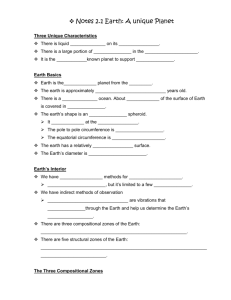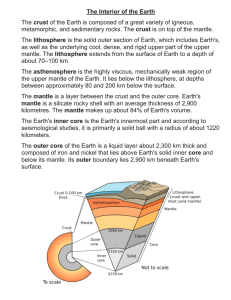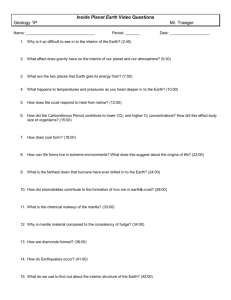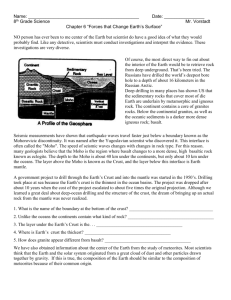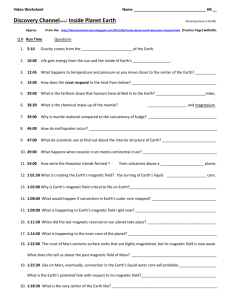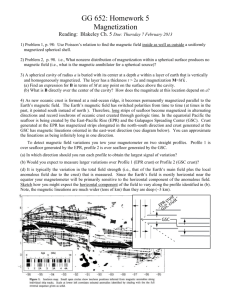7th Grade Science Notes
advertisement
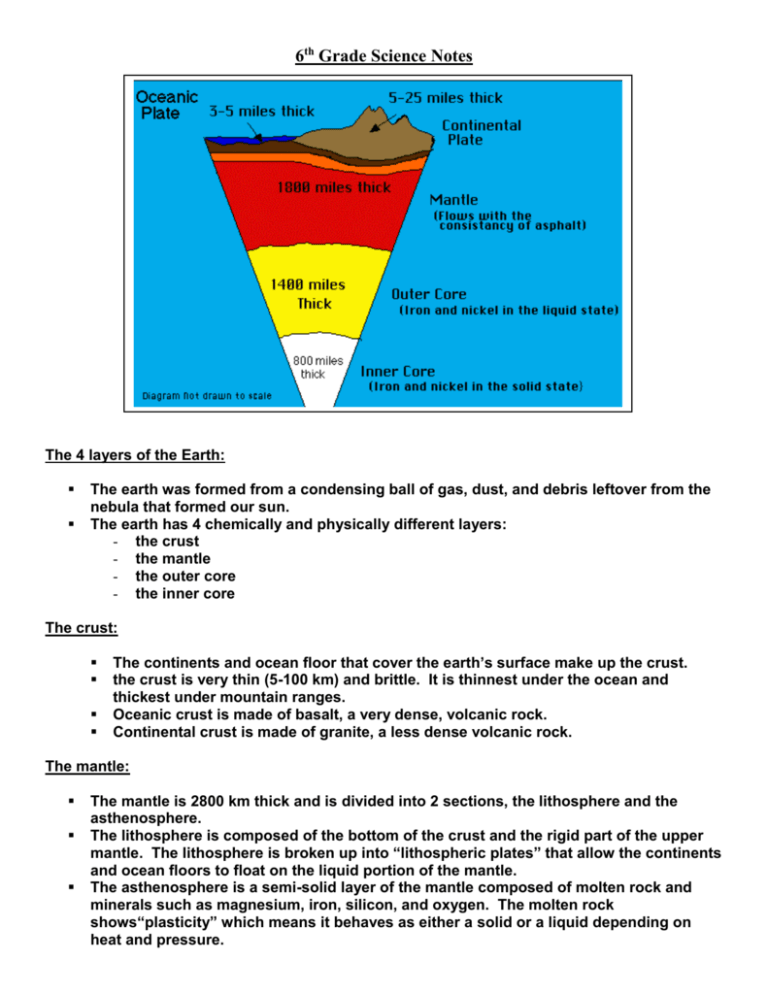
6th Grade Science Notes The 4 layers of the Earth: The earth was formed from a condensing ball of gas, dust, and debris leftover from the nebula that formed our sun. The earth has 4 chemically and physically different layers: - the crust - the mantle - the outer core - the inner core The crust: The continents and ocean floor that cover the earth’s surface make up the crust. the crust is very thin (5-100 km) and brittle. It is thinnest under the ocean and thickest under mountain ranges. Oceanic crust is made of basalt, a very dense, volcanic rock. Continental crust is made of granite, a less dense volcanic rock. The mantle: The mantle is 2800 km thick and is divided into 2 sections, the lithosphere and the asthenosphere. The lithosphere is composed of the bottom of the crust and the rigid part of the upper mantle. The lithosphere is broken up into “lithospheric plates” that allow the continents and ocean floors to float on the liquid portion of the mantle. The asthenosphere is a semi-solid layer of the mantle composed of molten rock and minerals such as magnesium, iron, silicon, and oxygen. The molten rock shows“plasticity” which means it behaves as either a solid or a liquid depending on heat and pressure. Convection currents in the asthenosphere allow the lithosphere above it to move. The outer core: The outer core is located about 2900 km beneath the crust and is 2200 km thick. It is composed of liquid iron (Fe) and nickel (Ni) at about 40000 F. The inner core: The inner core is only 1250 km thick and is a solid ball of Fe and Ni. The temperature and pressure are so intense ( about 90000 F and 3 million atmospheres) that the atoms cannot move but can only vibrate in place. The solid core actually spins within the liquid, outer core and this generates a magnetic field. The earth’s magnetic field has a north and south pole and extends throughout the entire planet and even out into space. The earth’s magnetic poles are actually different from the geographic poles which are at the axis of the planet. A compass points only to the magnetic north pole of the planet. How do we know? Geologists have learned to develop theories based on indirect evidence. Observations from earthquakes, volcanoes, fossils, drilling and mining, sonar and photos from space are all types of indirect evidence that, when put together, can lead to a theory about the inside of the earth. Seismic waves from earthquakes change their speed and direction as they pass through solids or liquids. By mapping seismograph patterns from all around the globe, the consistency of the different layers of the earth was determined. The other terrestrial planets and the moon do not have a magnetic field like the earth does. Only certain elements (such as iron) can be magnetized. However, the iron atoms must be spinning to produce a magnetic field. The magnetic field of the earth has shifted and even flipped many times. This means that the iron at the core must be shifting too within it’s liquid, outer layer. The examination of thousands of meteorites indicates that most of the rocky material in the solar system is composed of iron and nickel so the terrestrial planets, like Earth, must have formed from the same material. Radioactive dating of meteorites and moon rocks also show that they were all formed at the same time as the earth was.




